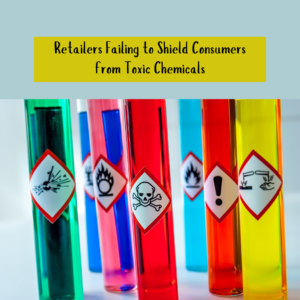EPA Finalizes Rule to Reduce Hydrofluorocarbon Emissions

EPA Finalizes Rule to Reduce Hydrofluorocarbon Emissions: A Major Step in Combating Climate Change
In a significant move to address climate change, the U.S. Environmental Protection Agency (EPA) has finalized a rule aimed at drastically reducing emissions of hydrofluorocarbons (HFCs), potent greenhouse gases commonly used in air conditioning, refrigeration, and other industrial applications. These chemicals, though less prevalent than carbon dioxide or methane, have a much higher global warming potential, making them a crucial target in global efforts to curb climate change. The finalized rule is part of the EPA’s commitment to meet U.S. climate goals and uphold international agreements such as the Kigali Amendment to the Montreal Protocol, which aims to phase down HFC use worldwide.
What Are Hydrofluorocarbons (HFCs)?
Hydrofluorocarbons (HFCs) are synthetic chemicals primarily used as refrigerants in cooling systems, such as air conditioners, refrigerators, and commercial freezers. They replaced chlorofluorocarbons (CFCs) and hydrochlorofluorocarbons (HCFCs) in the 1980s and 1990s after those substances were found to be depleting the ozone layer. While HFCs do not harm the ozone layer, they are a significant contributor to climate change due to their ability to trap heat in the atmosphere at levels far greater than carbon dioxide.
HFCs are classified as short-lived climate pollutants because their atmospheric lifetime is relatively short compared to CO2, yet their warming potential is hundreds to thousands of times greater. For example, the most common HFC, HFC-134a, has a global warming potential (GWP) of 1,430 times that of carbon dioxide over a 100-year period. This makes the reduction of HFCs a priority in efforts to combat climate change.
The EPA’s New Rule: Phasing Down HFC Emissions
The EPA’s finalized rule, announced in late 2023, builds on prior regulations that sought to gradually reduce HFC production and consumption in the U.S. The new rule sets stringent targets for cutting HFC emissions, aiming for an 85% reduction in the use and production of these chemicals by 2036. This rule aligns with the global efforts set out in the Kigali Amendment, which the U.S. formally joined in 2022, committing the country to phase down HFCs over the next two decades.
The key components of the EPA’s rule include:
Gradual Reduction of HFC Production and Consumption: The EPA will cap HFC production and consumption and require industries to cut their use of these chemicals by 40% by 2024, 70% by 2029, and 85% by 2036. These reductions will be achieved through a combination of incentives, quotas, and penalties for non-compliance.
Encouraging the Transition to Safer Alternatives: The EPA is promoting the adoption of alternative chemicals and technologies with lower global warming potential. Many industries are already transitioning to natural refrigerants like ammonia, CO2, and hydrocarbons, which have minimal or no impact on the climate.
Enforcement and Compliance Measures: The rule includes a robust framework for monitoring compliance, tracking HFC production, and ensuring adherence to the phase-down schedule. Companies found to be in violation of the limits could face significant fines or legal action.
Economic and Environmental Benefits: According to the EPA, the rule will prevent the equivalent of 4.5 billion metric tons of carbon dioxide emissions by 2050, a substantial contribution to U.S. climate goals. The agency also estimates that the rule will result in economic savings of $270 billion by 2050 due to improved energy efficiency and reduced healthcare costs related to air pollution and climate impacts.
Why Reducing HFCs Is Critical for Climate Action
While carbon dioxide (CO2) emissions from burning fossil fuels are the most well-known driver of global warming, HFCs represent a smaller but still significant share of greenhouse gas emissions. The relatively short atmospheric lifespan of HFCs, combined with their extremely high global warming potential, means that reducing their emissions can have a rapid and measurable impact on slowing the pace of climate change.
HFCs are primarily used in cooling and refrigeration, which are growing industries worldwide, especially in developing countries where demand for air conditioning and refrigeration is increasing. Without regulatory action, HFC emissions could rise dramatically in the coming decades, undermining efforts to meet global climate targets.
The EPA’s new rule is a vital part of the broader strategy to reduce greenhouse gas emissions. By tackling HFCs, the U.S. can make significant progress in meeting its national and international climate commitments. Furthermore, the rapid reductions in HFC emissions can help to avoid the worst impacts of climate change, such as extreme weather events, rising sea levels, and disruptions to agriculture and water supplies.
International Context: The Kigali Amendment
The EPA’s rule also brings the U.S. in line with international efforts to phase down HFCs, particularly under the Kigali Amendment to the Montreal Protocol. The Kigali Amendment, adopted in 2016, is a global agreement that aims to reduce the production and consumption of HFCs by more than 80% by mid-century. As of 2024, over 130 countries have ratified the amendment, and they are collectively working to reduce HFC emissions in a coordinated manner.
By aligning with the Kigali Amendment, the U.S. is reaffirming its leadership in international climate action. The amendment builds on the success of the Montreal Protocol, which is widely regarded as one of the most successful environmental agreements in history for its role in phasing out ozone-depleting substances. The phase-down of HFCs under the Kigali Amendment is expected to prevent up to 0.5 degrees Celsius of global warming by the end of the century, a significant contribution to the Paris Agreement’s goal of limiting temperature rise to 1.5 degrees Celsius.
Industry Impact: Transitioning to Climate-Friendly Alternatives
The transition away from HFCs presents both challenges and opportunities for industries that rely on refrigeration and air conditioning. While the cost of switching to HFC alternatives can be significant, many businesses are already investing in new technologies that not only reduce their environmental impact but also improve energy efficiency.
For example, natural refrigerants like CO2, ammonia, and hydrocarbons are increasingly being used in refrigeration and air conditioning systems. These substances have a negligible impact on the climate and, in some cases, offer better energy performance than HFCs. The EPA’s rule is expected to accelerate the adoption of these alternatives, creating a more sustainable future for industries that depend on cooling technologies.
In addition to the environmental benefits, the shift away from HFCs is expected to drive innovation and job creation in the green technology sector. As companies invest in new cooling technologies, there will be growing demand for engineers, technicians, and manufacturers who can develop and maintain these systems.
Challenges and Criticism
Despite the widespread support for the EPA’s rule, there are challenges to implementing the phase-down of HFCs. Some industries have expressed concerns about the costs associated with transitioning to alternative refrigerants, particularly small businesses that may struggle to afford the necessary upgrades to their equipment. There is also the issue of enforcing the new regulations, as some companies may attempt to circumvent the rules by continuing to produce or import HFCs illegally.
However, the EPA has taken steps to address these concerns. The agency is providing financial incentives and technical assistance to help businesses make the transition to alternative refrigerants. In addition, the enforcement provisions of the rule are designed to ensure compliance and prevent illegal HFC production and use.
A Significant Step Toward Climate Mitigation
The EPA’s final rule to reduce hydrofluorocarbon emissions is a critical step in the fight against climate change. By phasing down the use of these potent greenhouse gases, the U.S. is making significant progress toward its climate goals and aligning itself with international efforts to reduce global warming.
While challenges remain, the benefits of reducing HFC emissions are clear: fewer harmful greenhouse gases in the atmosphere, improved energy efficiency, and a more sustainable future for industries that rely on refrigeration and cooling technologies. As the world continues to grapple with the effects of climate change, the EPA’s action on HFCs represents a crucial piece of the puzzle in reducing emissions and mitigating global warming.











